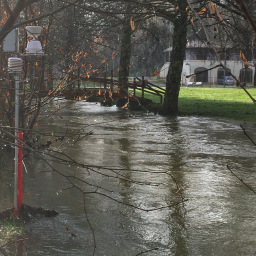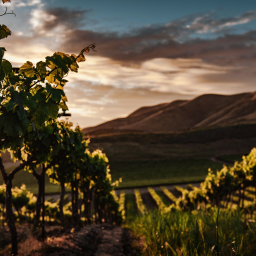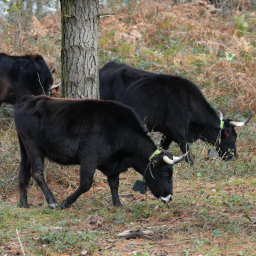NEW
Use of vegetation cover decreases erosion by more than 60% in vineyards located on an incline in Rioja Alavesa
19 April 2021Use of vegetation cover decreases erosion by more than 60% in vineyards located on an incline in Rioja Alavesa, according to NEIKER Study
- This work is part of the MONTCLIMA project, which analyses sustainable resource management practices in the fight against the effects of climate change in mountainous regions
- Rioja Alavesa has more than 5,000 hectares of vineyards with inclines above 10% and therefore a high risk of erosion
- The test was done with Bodegas Maisulan in Elvillar (Araba) and the results of the first campaign were positive in terms of production and quality results
The use of spontaneous vegetation cover, or naturally-occurring vegetation cover, can decrease erosion by 60% compared to conventional tilling, according to a study carried out by NEIKER within the framework of the European MONTCLIMA project on vineyards on a slope in Rioja Alavesa.
This kind of coverage could therefore prevent the erosion of 2.5 tonnes per hectare of land compared to the nearly 4 tonnes that erode under the use of traditional tilling. This amount corresponds solely to the first seven months of field work analysed in the project (April to November 2020) and it is notable that this was achieved with no significant differences in production or vine quality.
The MONTCLIMA project funded by the European INTERREG SUDOE programme is looking for sustainable resource management practices to respond to the effects of climate change in mountain areas, especially focusing on the risks of soil erosion, drought, flooding, and forest fires.
Vineyards susceptible to erosion
The woody crop most representative of the Basque Country is vines, given both the share of surface area they occupy and their economic significance. In addition to the production areas for the different Denominations of Origin of Txakoli (in Gipuzkoa, Bizkaia, and Araba), which total around 1,000 hectares, the largest winegrowing area is in Rioja Alavesa southern Araba. It is home to nearly 13,000 hectares of vineyards.
The Rioja Alavesa region has a climate more akin to the Mediterranean. Although accumulated precipitation there is much lower than on the Cantabrian coast (400-600 millimetres per square metre per year in Rioja Alavesa compared to 1,000-1,600 in the Txakoli region), the usual form of tilling the land to keep weeds under control makes the land more susceptible to erosion.
In this region of southern Araba, winemaking represents 65% of usage of usable agricultural land, of which more than 40% has an average incline above 10%, the limit at which erosion considerably increases. Therefore, over 5,000 hectares of vineyards in Rioja Alavesa is at risk of erosion, a figure which goes up when the extreme weather phenomena associated with climate change (large storms, hail, extreme heat and cold, etc.) are factored in.
Support from Bodegas Maisulan
The study had the support of Bodegas Maisulan in Elvillar (Araba), which uses organic production on its vineyards. The test was carried out on a Graciano vineyard on a slope between 10% and 20%. The pilot plot was used to compare conventional tilling (4-6 passes per year with tilling machinery) with spontaneous vegetation cover on the vineyard. This involved not ploughing and allowing the flora of the terrain to take over the space between the vines. Said flora was then controlled by 1-3 passes of shallow tillage per year, always attempting to affect the surface of the terrain as little as possible.
Interreg-SUDOE Programme
The MONTCLIMA project is set to last 42 months and is comprised of nine partners: the Association of the Working Community of the Pyrenees (CTP), the coordinator, the Centre for Ecological Research and Forestry Applications (CREAF), NEIKER, the Centre for Forest Services, Promotion, and Industry of Castille and Leon (CESEFOR), the Polytechnic Institute of Bragança (IPB), the National Forest Office of France (ONF), FORESPIR, Centre for Study and Expertise on Risk, the Environment, Mobility and Management (CEREMA) and the Intermunicipal Community of the Region of Leiria (CIMRL). This collaboration will be the setting for the development of the first transnational strategic natural risk prevention and management framework for the mountainous areas of south-western Europe.
Infused with 1,401,811 euros, the project was 75% co-funded by the European Regional Development Fund (ERDF) via the Interreg-SUDOE Programme. SUDOE’s purpose is to support regional development in south-western Europe by funding transnational projects via the ERDF.






